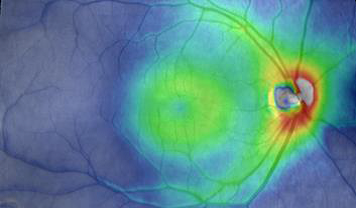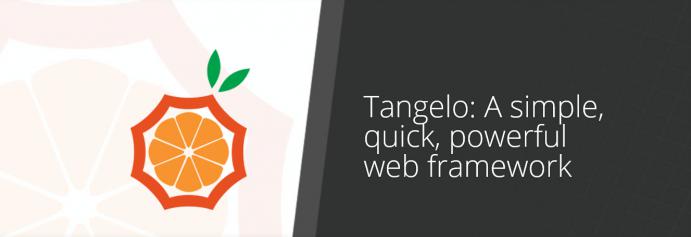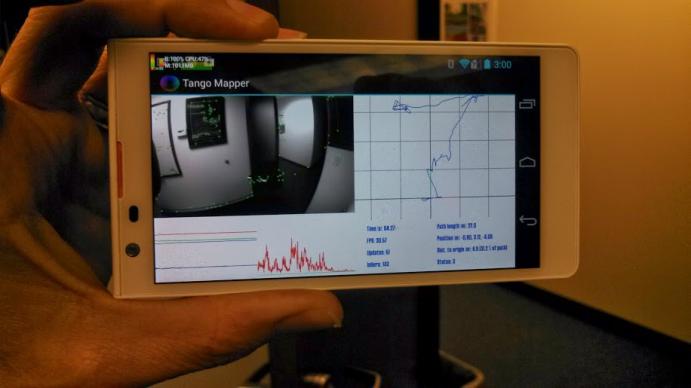Year in Review at Kitware

This year, many exciting things happened at Kitware! Here are a few of our most notable releases, announcements, and events. We are looking forward to another great year filled with ground-breaking collaborations and advancements in open-source software!
Software Releases
CMake is the cross-platform, open-source build system. It is a family of tools designed to build, test, and package software. Some of the more significant features of CMake 3.1 are: the addition of Windows Phone and Windows Store support to Visual Studio 11 (2012) and above Generators, the addition of NVIDIA Nsight Tegra support to Visual Studio 10 (2010) and above Generators, and the addition of “7Z” and “TXZ” generators supporting lzma-compressed archives to CPack. Furthermore, the syntax for *Variable References* and *Escape Sequences* was simplified to allow for a much faster implementation.
ITK is an open-source, cross-platform system that provides developers with an extensive suite of software tools for image analysis. The release features documentation improvements, filtering improvements, imageIO improvements, infrastructure improvements, enhanced code coverage, bug fixes, new remote modules, and more!
Tangelo is a web application development platform, geared primarily towards data analytics and visualization applications. This platform is made up of Tangelo itself – a web server with a twist – and JavaScript and Python APIs to help drive it, plus an ecosystem of plugins providing support for data management, user interfaces, visualization, and more.
Developed in collaboration with the National Association for Medical Image Computing (NA-MIC) and the broader Slicer community, Slicer 4.4 is a free, open-source (BSD-style license) software platform for the segmentation, registration, visualization, and analysis of medical images for preclinical and clinical research involving disease detection, diagnosis, treatment planning, response monitoring, population analysis, and image-guided therapy. Spearheaded at Kitware by Jean-Christophe Fillion-Robin, Slicer 4.4 introduces an improved App Store, known as the Extensions Manager, for adding plug-ins to Slicer.
ParaView is an open-source, multi-platform data analysis and visualization application. ParaView users can quickly build visualizations to analyze their data using qualitative and quantitative techniques. ParaView 4.2 features an expanded properties panel, refactored applications settings, improved Python scripting and tracing, improved NumPy integration, and additional color legend options. ParaView Catalyst and ParaViewWeb have also been improved for this release.
Be sure to check out how we are making extensive updates to the ParaView User’s Guide, which will be available in 2015!
The Visualization Toolkit (VTK) is an open-source, freely available software system for 3D computer graphics, image processing, and visualization. VTK consists of a C++ class library and several interpreted interface layers including Tcl/Tk, Java, and Python. VTK 6.1.0 fixes bugs and adds features on top of the more modular code structure of version 6.0. The source, data, and new vtkpython binary packages can be downloaded from VTK’s website.
VeloView is a free open-source application built on ParaView technology. It is designed for the visualization and analysis of point cloud data generated by the Velodyne HDL-64E and HDL-32E LiDAR sensors. New in version 2.0 is the ability to record and display position packets. Additional features in version 2.0 include a ruler for distance measurements in 2D, a plane fit tool, a laser selection tool, and the ability to show sequential data in one display.
The Kitware Image and Video Exploitation and Retrieval (KWIVER) toolkit is a collection of software tools designed to tackle challenging image and video analysis problems and other related challenges. Recently started by Kitware’s Computer Vision and Scientific Visualization teams, KWIVER is an ongoing effort to transition technology developed over multiple years to the open source domain to further research, collaboration, and product development. Please see KWIVER’s download page for a list of existing open-source repositories, government open-source repositories, and data sets.
Announcements
Kitware announced many new projects, awards, and developments throughout 2014. Here are a few of the highlights:
We’re developing software that addresses the need for clinical tools that provide accurate and reproducible evaluation of cranial morphology.
This new collaboration will enable VTK and ParaView to fully benefit from the huge computational and graphics performance the NVIDIA Tesla and Quadro architectures provide.
We are collaborating with leaders in HPC and visualization to advance scientific data management, analysis, and visualization at extreme scale.
With the team at TACC, we are working on supporting the Intel® Xeon Phi™ Coprocessor in ParaView and VTK.
Our winning paper, co-authored by Sangmin Oh, Megha Pandey, Ilseo Kim, Anthony Hoogs, and Jeff Baumes, is titled “Personalized Economy of Images in Social Forms: An Analysis on Supply, Consumption, and Saliency.”
 |
|
| A montage of retinal thickness over a wie field obtained from the Zeiss Cirrus OCT and i2k Retina. Contributed by Joe Carroll, Wisconsin College of Medicine. |
We are developing software that tackles the shortcomings of today’s retinal imaging tools.
Our new technology for image guidance will help surgeons treat craniofacial anomalies and dentofacial deformities.
Staying current on popular trends, we created a simple website on the Ice Bucket Challenge to show the breadth of participation in the fundraiser.
We released the full source code for our WAMI tracker, with unlimited rights under the conditions of the DoD Community Source Usage Agreement, to anyone with access to Forge.mil.
The tutorial promotes faster development of the open Project Tango platform.
As part of this effort, 156 repositories were converted to Git and transferred to GitHub.
Events
For the second time, VTK participated in the GSoC program, which fosters student participation in open-source communities.
At the event, Will and Patrick spoke about the importance of open-source software and reproducible science, especially as software is becoming central to gathering, managing, and disseminating large-scale data. As Will and Patrick noted, open-source software and open science have the potential to provide more powerful tools to epidemiologists and public health officials.
Kitware’s open-source solutions were highlighted through presentations, invited talks, tutorials, and videos.
Matt Turek, Kitware’s Assistant Director of Computer Vision, presented new technology being developed at Kitware that addresses the challenges of analyzing crowdsourced multimedia.
Matt McCormick and Aashish Chaudhary served as members of the SciPy Program Committee, and we participated in several activities, including presentations, developer sprints, and Birds-of-a-Feather (BOF) sessions.
Kitware’s participation in the conference included co-authoring a paper that was presented on atlas-based anaysis of pathologies, presenting work on FEM-based biomechanical anaysis, attending the MICCAI Board meeting and the meeting for associate editors of IEEE Transactions on Medical Imaging, attending the student career event, sponsoring the conference, sponsoring the Young Scientist Publication Impact Award for a third year, presenting a talk on “Building image-guidance systems from open-source components,” and serving on an academia and industry panel.
The applications include ParaView, 3D Slicer, Slicer Extensions, VesselView, Bender, CMake, Avogadro, and Visualization for Video Analytics (VIVIA) for video stream, content-based retrieval, and wide area motion imagery (WAMI).


